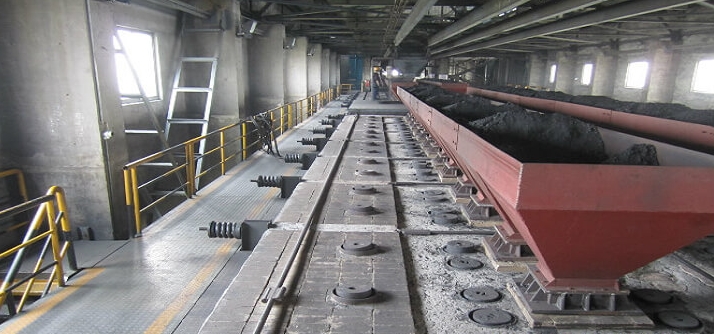
Anthracite with electrical calcination is anthracite coal that contains low levels of moisture and volatiles. It also has a high level of sulphur. The carbon is used in steel production for prebake electrodes, Soderberg pastes and tamping powders.
GCA (gas calcined) is made by burning high-grade alumina in gas furnaces instead of using electricity. The properties are very similar to ECA. Major manufacturers, such as Asbury Carbons and Rheinfelden Carbon, produce it.

Electric calcined Anthracite is carbonaceous and is made from high-grade coal heated in an electric furnace. The process of calcining coal removes the impurities, resulting in a low-ash product with low moisture and volatile matter. It can be used in the manufacture of carbon electrolyte pastes as well as an additive for smelting.
ECA has seen a growth in its market due to an increase in steel and other metal production. As it has less sulfur than petroleum coke and is an environmentally-friendly substitute for other carbon additives, ECA also enjoys a growing market. Growing global sustainability awareness is fueling the demand for calcined coal.
Global ECA Market Segmentation by Product, Application, and Geography ECA is produced by heating anthracite high grade in a DC-electric calciner, resulting in a semi-graphitized devolatized product. Major manufacturers include Rheinfelden Carbon, Asbury Carbons, Ningxia Hengtai Carbons Co. Ltd, and Shanxi Hongqiqu New Material Co. Ltd.
In order to calcine carbonaceous material such as anthracite or pitch coke, electric current is passed through the bed. Carbonaceous matter is fed to a calcining furnace, which has two carbon electrodes and a means of supplying electric current. The calcined carbonaceous material is discharged at the bottom of the calcining furnace in one stream which contains material calcined in the center of the furnace and in another stream which contains material calcined near the periphery of the calcining furnace.
Electrically calcined (EC) anthracite, or high-quality smokeless coal can be made by heating anthracite in an electric furnace at controlled temperatures. This procedure removes moisture and increases the density, electrical conductivity, and mechanical properties of anthracite. Anthracite electrically calcined is used to make carbon cathodes, carbon electrodes and Soderberg electrodes. It can also be used as an additive in oils and lubricants.
Electric calciners are used to calcine high-quality alumina coal. Electrically calcined coal (ECA), or anthracite, is what is produced when anthracite in a rotary kiln is calcined. ECA coals are low in sulfur and moisture, which makes them ideal for carbon pastes. The cathode blocks are also used for aluminum smelting.
In contrast to calcination using furnaces, the electro-calcination method uses direct current for controlling heat and ensuring a uniformly calcined end product. Additionally, electro-calcination is much more effective than other calcination techniques.
The global market for Electrically Calcined Anthracite Coals is expected to grow owing to a number of factors. The key factors driving the market are the increasing demand for steel and ECA's use as an alternative for petcoke to make carbon electrodes in the aluminum industry. Electric vehicles, as well as the transition to sustainable energies and the rise in popularity of these vehicles are likely drivers of growth.
Electric calcination involves heating anthracite high grade coal to over 2 000 degrees Celsius. This is done in a DC powered furnace. In this way, any volatile or moist matter is removed. This produces a denser carbon that has a better mechanical resistance. This product is much stronger and less likely to break than coal.
In the past few years global coal production decreased, leading to a shortage in raw material used for anthracite manufacturing. It is predicted that this will hinder the growth of the anthracite industry in the next few years. Petcoke is also likely to be prohibited in India, a developing economy, due to its severe pollution issues.
Russia is a major producer of anthracite in the world and exports it to various countries. Raw material prices for this country are much lower than in other large manufacturing centers like Australia. It is therefore a major supplier to the market. Moreover, Russia is an important exporter of ECA to the aluminum industry, where it is used to make carbon anode, cathode, and cold ramming paste.

Write a Message